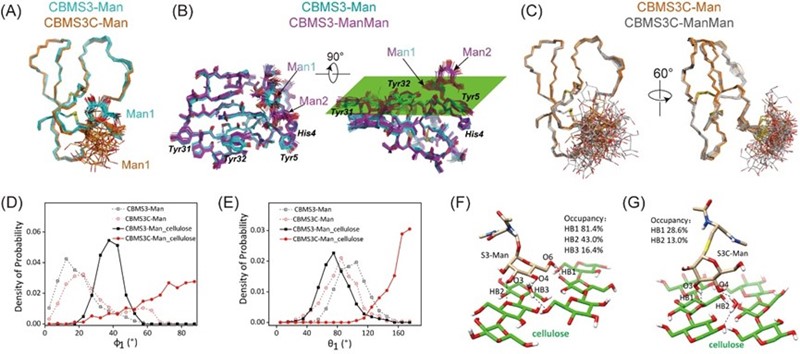Protein glycosylation is one of the most important post-translational modifications, which can be exploited to improve various aspects of therapeutic proteins and industrial enzymes. Different types of glycosylation have a variety of effects on protein properties and function, and a better understanding of the underlying mechanisms can provide valuable guidance for rational glycoengineering of proteins.
Recently, researchers from the Qingdao Institute of Bioenergy and Bioprocess Technology (QIBEBT) of the Chinese Academy of Sciences (CAS) and their collaborators have revealed why S-glycosylation cannot adequately mimic the role of natural O-glycosylation, and underscored the pivotal role of the glycosidic linkage in shaping the function of glycosylation.
The results were published in International Journal of Biological Macromolecules on Sept. 2.
In O-glycosylation, the glycan is bound to the oxygen (O) atom of a Ser or Thr side chain. In S-glycosylation, the glycan is bound to the sulfur (S) atom of Cys side chain.
Using S-glycosylation as a replacement for the more commonly occurring O-glycosylation can enhance the resistance of glycans against chemical hydrolysis and enzymatic degradation. These two types of glycosylation exert distinct effects on protein properties and functions.
To elucidate the molecular basis behind the observed differences, the researchers conducted a systematic analysis on various glycosylated forms of a model glycoprotein, the carbohydrate-binding module (CBM) of Trichoderma reesei, using nuclear magnetic resonance spectroscopy and molecular dynamic simulations. Results showed that the S-linked glycosyl exhibited notably greater flexibility compared to the corresponding glycan moiety in O-glycosylation. As a result, glycan-peptide interactions were weakened, leading to significant reduction of stabilizing and substrate binding effects like that of the O-glycosylation.
Furthermore, they revealed that the altered hydrogen-bonding capability between the glycan and the polypeptide was the main reason for different flexibility between S- and O-glycosylation, which could affect the impact of glycosylation on CBM binding affinity to its substrate by altering the enthalpy and entropy of the binding process. Additionally, they determined the structural and dynamic mechanism of the impact of the second glycosyl on proteins.
"Our study reveals distinct structural and dynamic differences between O- and S-glycosylation, and these differences can lead to significant alterations in the effects of glycosylation," said Prof.FENG Yingang, co-corresponding author of the study. "Caution is imperative when switching glycosylation types in protein glycoengineering."

The structural and dynamic disparities between S- and O-glycosylationon lead to distinct effects on protein properties. (Image by FENG Yingang)
(Text by CHEN Chao, FENG Yingang)